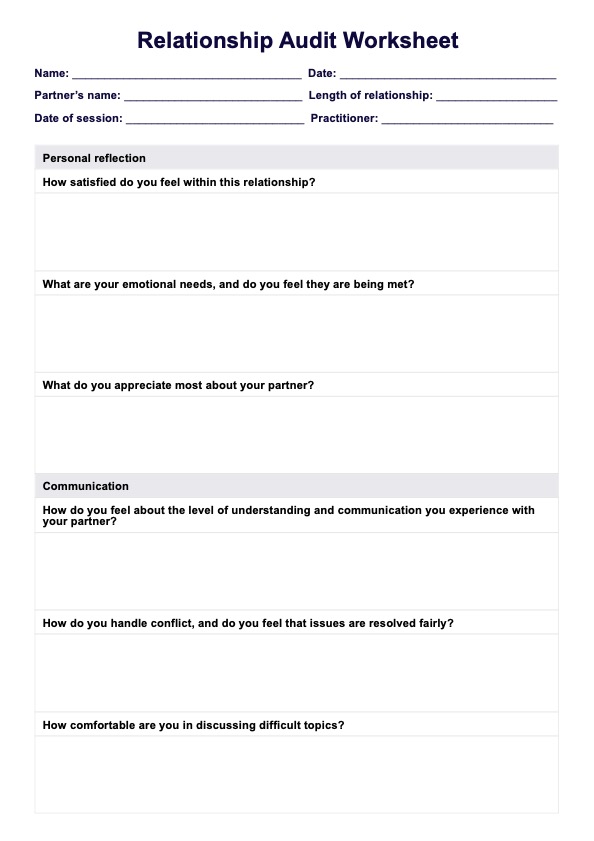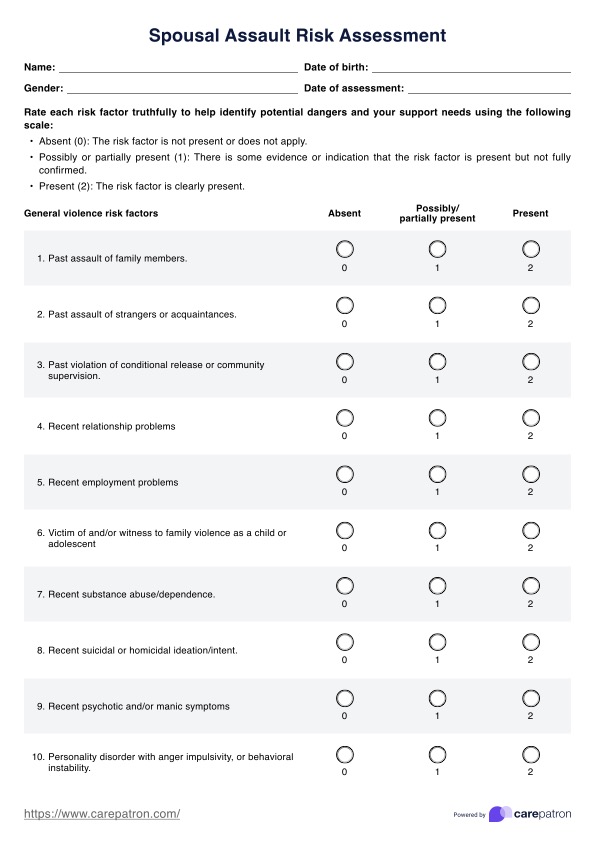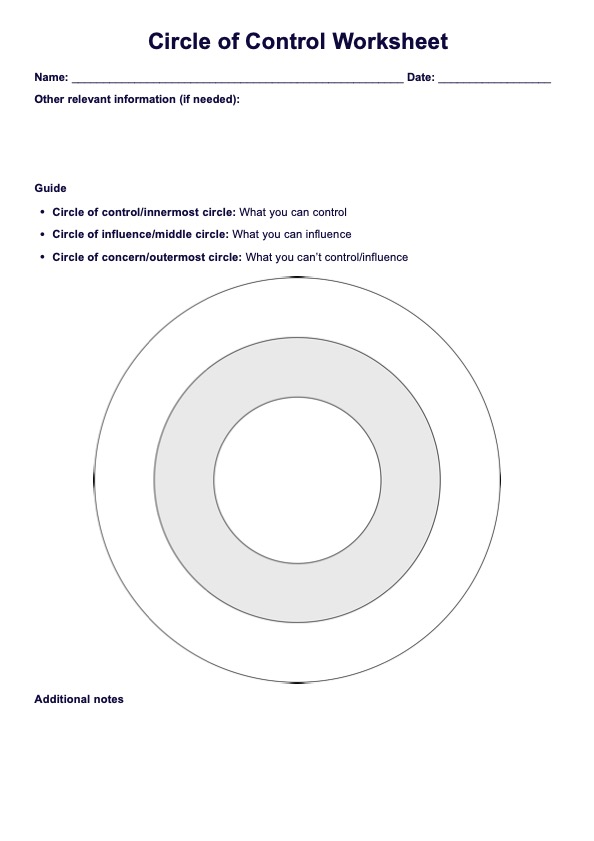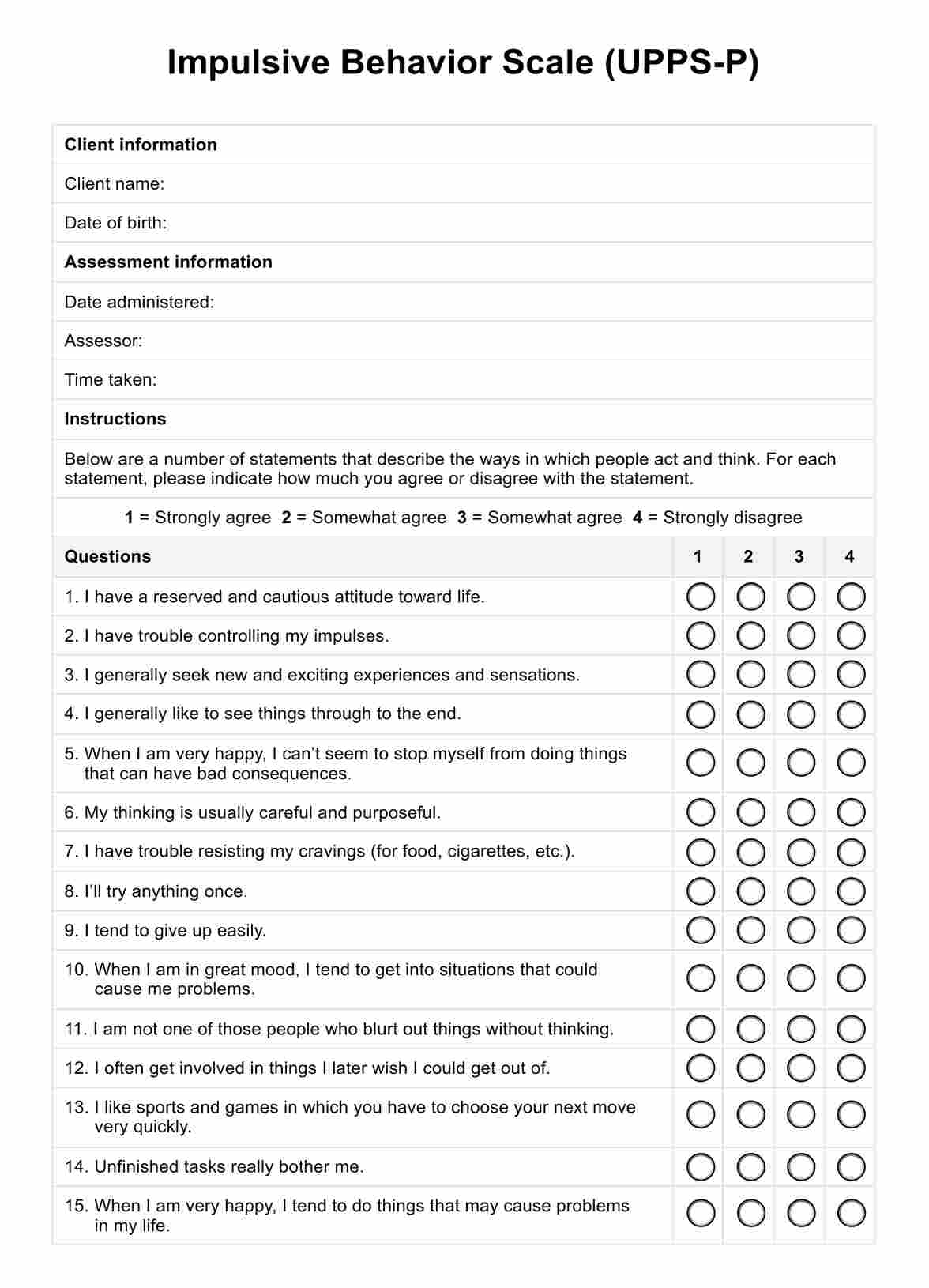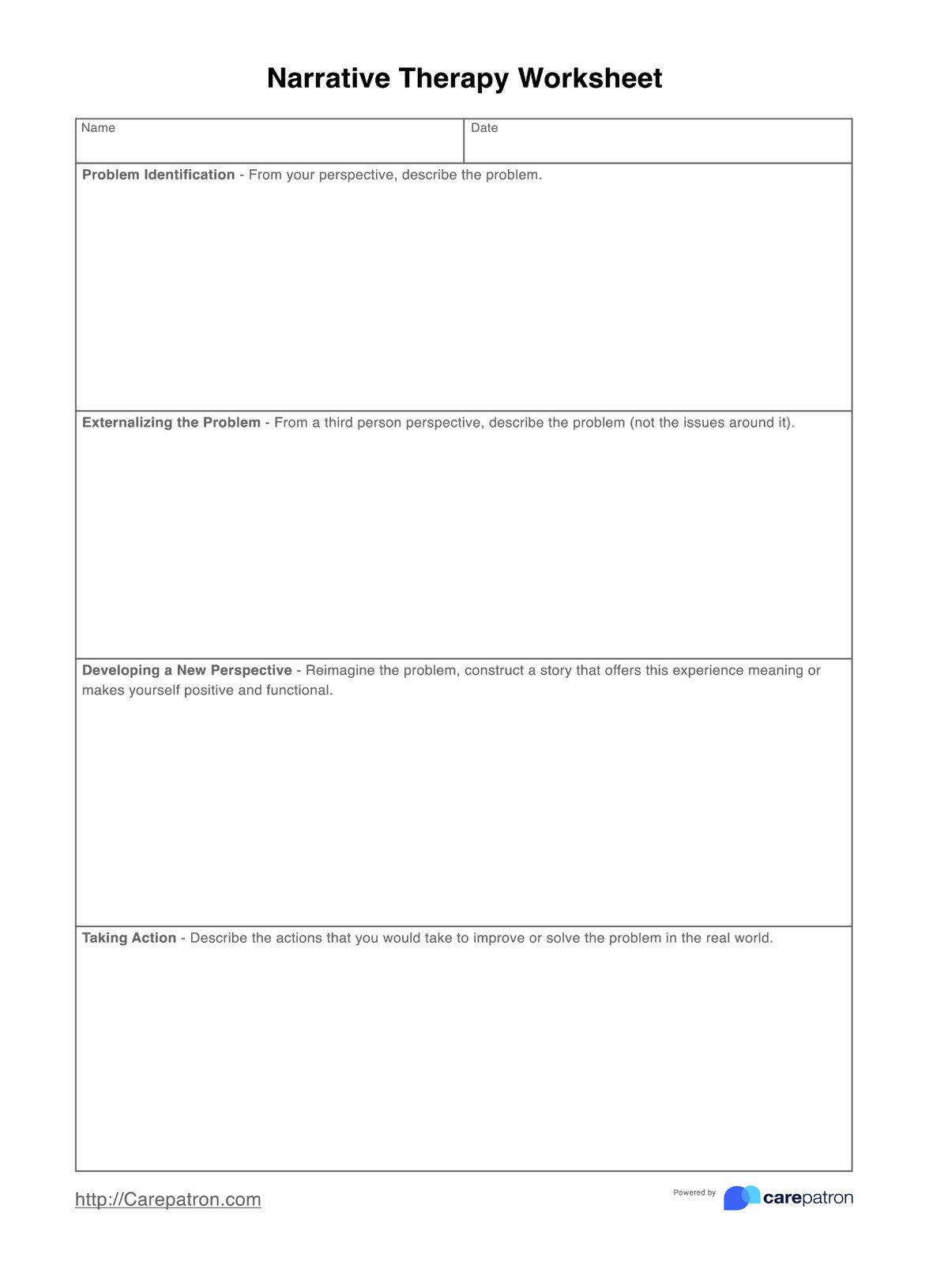Emotional Boundaries Worksheets
Enhance emotional well-being with our Emotional Boundaries Worksheet template. Improve self-awareness and build healthier relationships.


What is an Emotional Boundaries Worksheet?
Emotional boundaries are indispensable pillars for fostering robust, well-rounded relationships while simultaneously acting as guardians of our emotional equilibrium. These boundaries serve as the framework within which we delineate the scope of sharing our innermost thoughts, feelings, and emotions with others, effectively functioning as a protective barrier against the entanglement of emotions and external manipulation.
Establishing emotional boundaries is an intricate process that entails a profound understanding and respect for our feelings as distinctive and autonomous entities, distinct from the emotions of others. This recognition allows us to experience our emotions authentically, unburdened by external influences or coercion.
In tandem with emotional boundaries, emerge as a structured, pragmatic resource that empowers individuals to understand, build, and maintain these vital boundaries within their relationships. This worksheet stands as a testament to self-reflection and practical guidance.
Presenting individuals with thought-provoking questions and prompts encourages deep exploration of one’s emotional landscape, a critical evaluation of the existing boundaries, and formulating effective strategies for establishing boundaries that align with personal experiences and the intricate tapestry of human relationships. Ultimately, this resource equips individuals with the means to navigate the intricate and sometimes turbulent waters of human emotions with clarity and confidence.
Emotional Boundaries Worksheets Template
Emotional Boundaries Worksheets Example
How to use the Emotional Boundaries Worksheet:
Managing and maintaining emotional boundaries is crucial for healthy and fulfilling relationships. The Printable Emotional Boundaries Worksheet is a valuable tool to help you reflect on your emotional boundaries and take steps to strengthen them. Here are six simple steps to guide you through the process:
Step 1: Download the Template
Begin by downloading the Printable Emotional Boundaries Worksheet template, readily available online or from trusted self-help resources.
Step 2: Gather Your Materials
Before completing the worksheet, gather essential materials such as a pen or pencil, a quiet space for reflection, and your undivided attention.
Step 3: Complete the Personal Information Section
Fill in your name and age at the top of the worksheet to personalize it.
Step 4: Identify Your Emotions and Triggers
In the first section, list the emotions you commonly experience in your relationships. Consider situations or triggers that evoke these emotions. This self-awareness is crucial for understanding your emotional responses.
Step 5: Reflect on Boundaries and Set Goals
Move on to the sections where you define what emotional boundaries mean to you and how you differentiate between your emotions and others'. Reflect on recent interactions and assess where your emotional boundaries were crossed. Use these insights to identify the specific boundaries you want to establish and the relationships they apply to.
Step 6: Create an Action Plan
Think about effective ways to communicate your emotional boundaries. Plan self-care activities to reinforce these boundaries. Differentiate between healthy boundaries and emotional walls. Establish maintenance routines and consider how to handle boundary violations. Lastly, identify individuals or resources for guidance and support.
When would you use this Form?
The Emotional Boundaries Worksheet is a versatile resource suitable for various individuals and practitioners seeking to enhance emotional intelligence and foster healthier relationships. Here are scenarios in which this resource proves invaluable:
Therapists and Counselors: Therapists can utilize this worksheet to guide clients in exploring and strengthening their emotional boundaries, helping them navigate past trauma, develop healthier relationships, and manage emotional issues effectively.
Support Groups: Support group facilitators can incorporate this worksheet into their sessions, enabling participants to share experiences, set boundaries, and foster a safe, supportive environment.
Self-Help and Personal Development: Anyone on a journey of self-improvement can use this worksheet to reflect on their emotional boundaries, improve self-awareness, and develop strategies to manage emotions and relationships better.
Relationship Coaches: Relationship coaches can employ this tool to assist couples and individuals in establishing and communicating their emotional boundaries, leading to healthier, more fulfilling relationships.
Educational Institutions: School counselors and educators can introduce this worksheet to students, helping them navigate peer relationships and develop emotional resilience, which is critical for academic and personal success.
Workplace and Leadership Training: Human resources professionals and leadership coaches can integrate this worksheet into training programs to enhance team dynamics, foster emotional intelligence, and improve workplace relationships.
Recovery and Rehabilitation Programs: Professionals working in addiction recovery or mental health rehabilitation can use this resource to guide clients in rebuilding their lives and fortifying their emotional boundaries as they reintegrate into society.
Benefits
Using the Free Emotional Boundaries Worksheet can profoundly impact your emotional well-being and relationships. Here are some key benefits:
Enhanced Self-Awareness
The worksheet encourages introspection, helping you better understand your emotions, triggers, and how you respond in various situations.
Improved Emotional Resilience
By recognizing and setting healthy emotional boundaries, you can better manage stress, anxiety, and overwhelm, leading to increased emotional resilience.
Stronger Relationships
Establishing and communicating your emotional boundaries can lead to more honest, open, and respectful interactions with others, fostering deeper and more fulfilling relationships.
Conflict Resolution
It equips you with the skills to address boundary violations constructively, reducing conflicts and misunderstandings in both personal and professional relationships.
Personal Growth
The worksheet serves as a tool for personal development, allowing you to identify areas for growth and work towards becoming a more emotionally balanced individual.
Empowerment
Utilizing this resource empowers you to take control of your emotional well-being, helping you feel more confident and capable of managing your emotions and boundaries.
Research & Evidence
Healthy emotional boundaries are pivotal in promoting psychological and emotional well-being, as supported by various studies and experts. Maintaining these boundaries offers numerous advantages, including heightened self-esteem, improved relationships, reduced stress and anxiety, protection from emotional manipulation, and the cultivation of emotional safety within relationships.
Studies conducted by the American Psychological Association (APA) suggest that individuals with well-defined emotional boundaries tend to exhibit higher self-esteem. Moreover, psychology research underscores emotional boundaries' role in building healthier relationships, enabling clear communication of needs and expectations.
Emotional boundaries have also been associated with lower stress levels and protection against emotional manipulation and abuse, as highlighted by studies endorsed by the National Alliance on Mental Illness (NAMI). Additionally, they foster feelings of safety and security within relationships, promoting trust and confidence. Moreover, research indicates that individuals with these boundaries are better equipped to express their emotions healthily, promoting emotional well-being.
Recognizing the importance of emotional boundaries and implementing their recommendations can lead to a more balanced and fulfilling life, enhanced mental health, and stronger relationships.
References
"The Benefits of Healthy Emotional Boundaries" by the American Psychological Association. This article discusses the benefits of having healthy emotional boundaries, such as increased self-esteem, improved relationships, and reduced stress and anxiety.
"The Importance of Emotional Boundaries" by the National Alliance on Mental Illness. This article explains the importance of emotional boundaries and provides tips for setting and maintaining them.
"Emotional Boundaries: How to Set and Maintain Healthy Limits" by the Mayo Clinic. This article provides information on setting and maintaining healthy emotional boundaries, including identifying and communicating your needs to others.
Commonly asked questions
Emotional Boundaries Worksheets are typically used by individuals seeking to improve their emotional well-being and relationships. These worksheets are valuable tools for therapists, counselors, and anyone interested in understanding and strengthening their emotional boundaries.
Emotional Boundaries Worksheets are structured guides to explore and define personal emotional boundaries. Users engage in self-reflection, identify areas of concern, and practice boundary-setting through exercises and prompts in the worksheets. They can be completed individually or with the guidance of a therapist.
They assist individuals in gaining clarity about their emotional needs, learning to communicate these needs effectively, and setting limits when necessary. This, in turn, helps people improve self-esteem, reduce stress, and build healthier relationships by fostering emotional well-being and self-awareness.


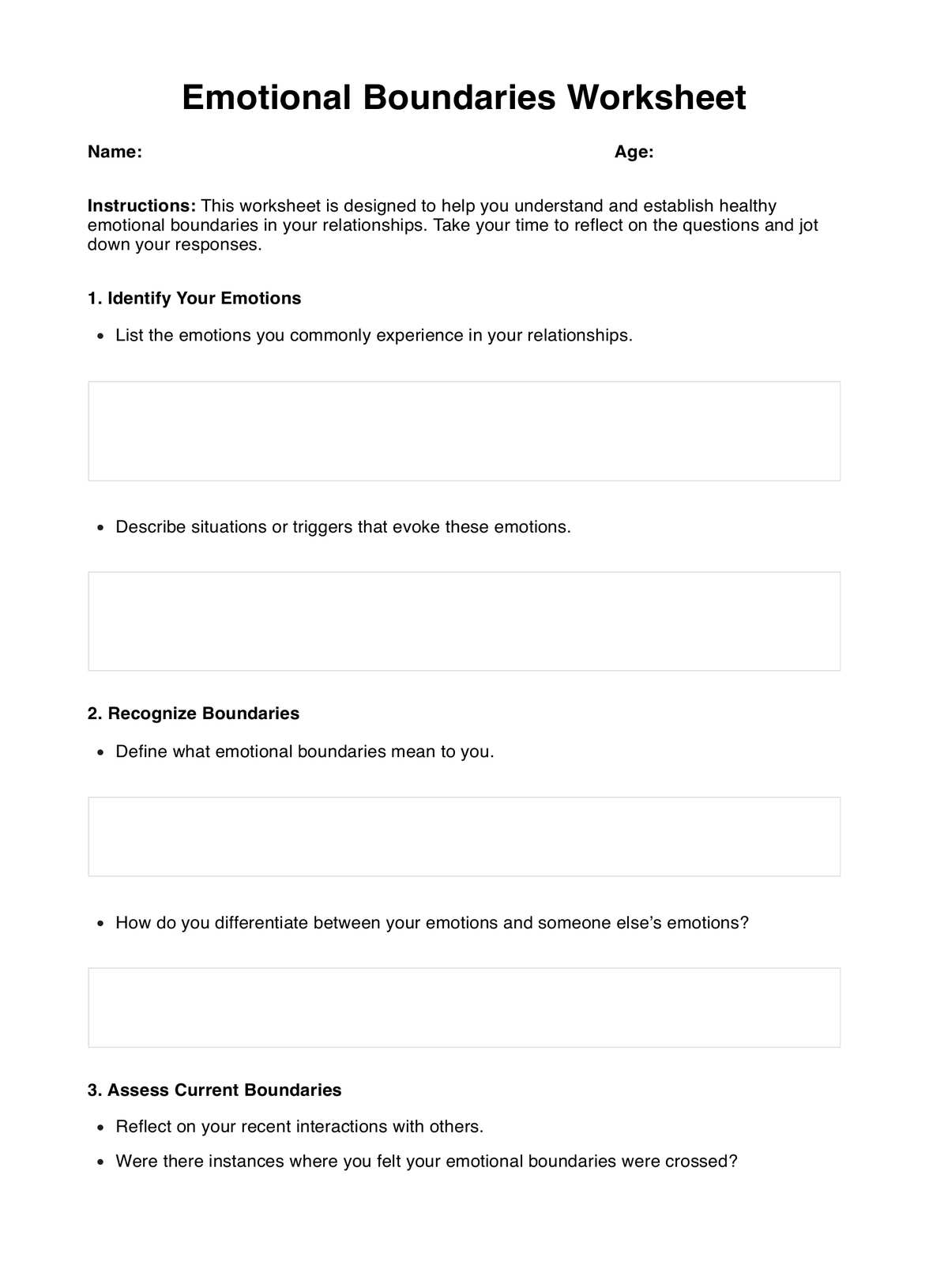
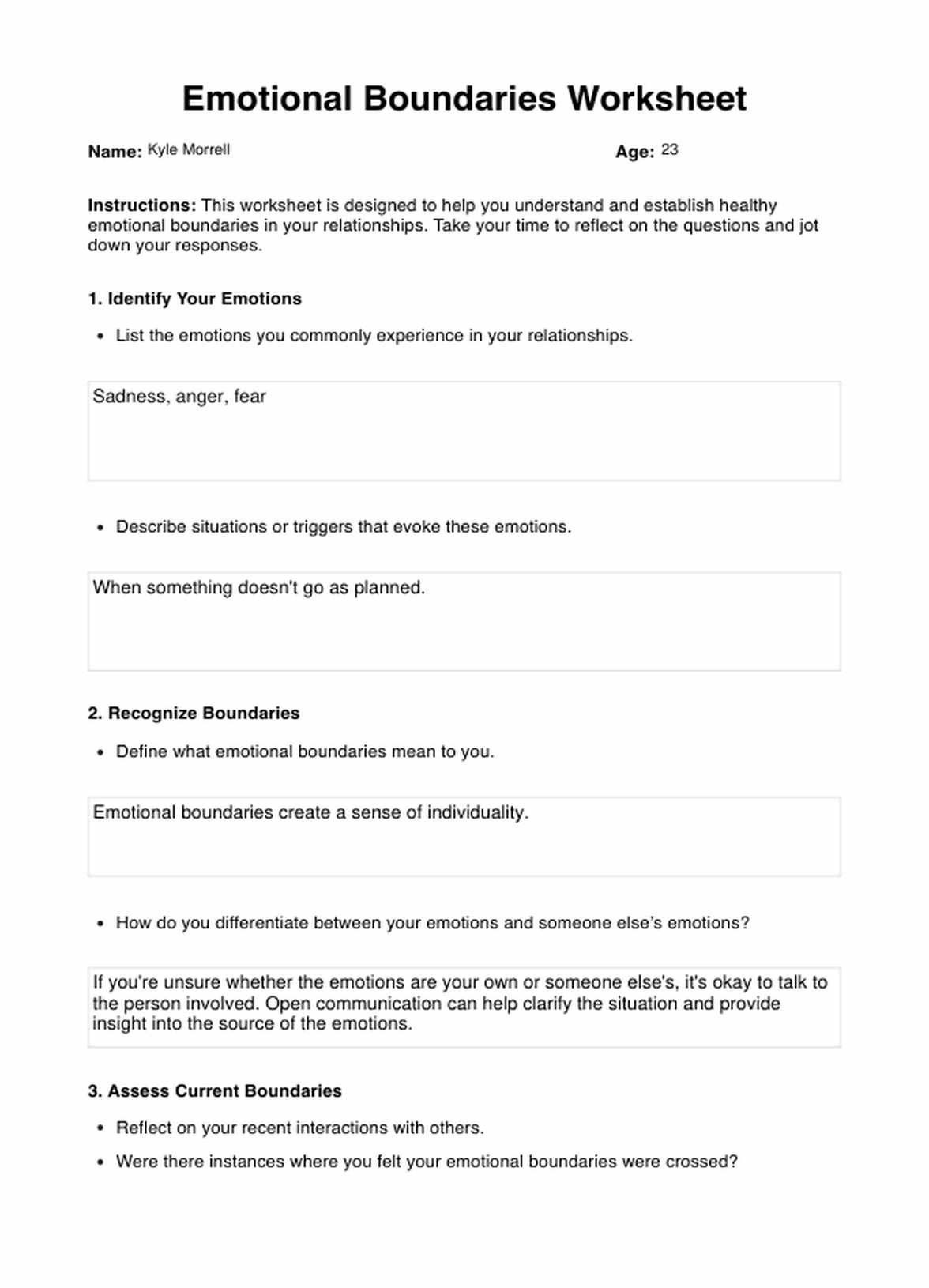

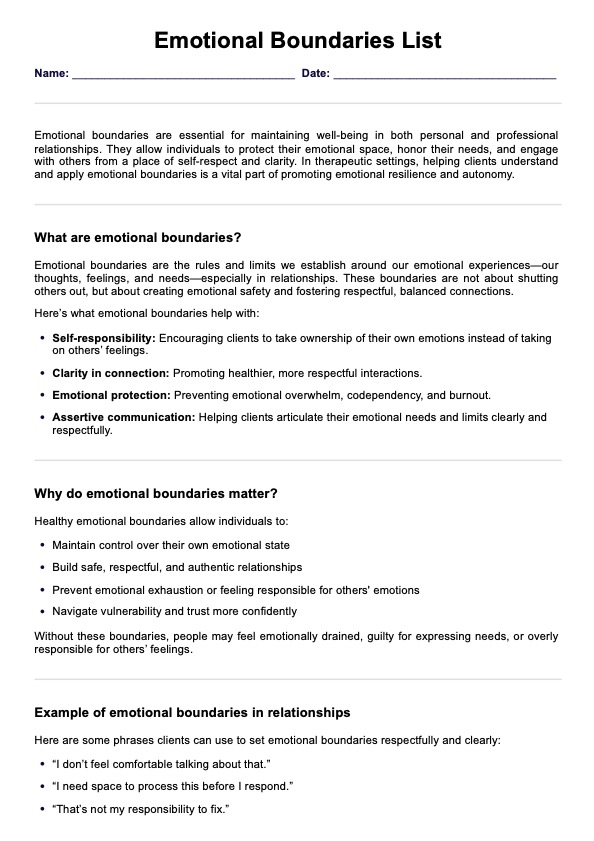














-template.jpg)


